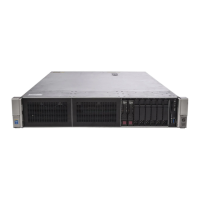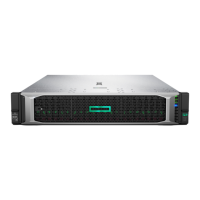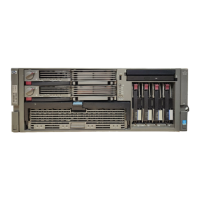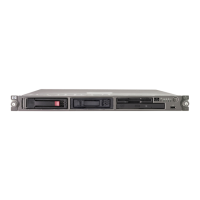SCSI and I/O 8-89
Figure 8-52. A3542A Indicator Descriptions
Cartridge Light - Flashes green to show activity, loading, unloading, reading, and writing. It shows steady
green to indicate a cartridge is loaded and the unit is ready.
Clean/Attention Light - Flashes Amber to indicate head cleaning is needed. This is an indication of an
excessive number of Read-After-Write (RAW) or third level error correction (C3 ECC) errors. This
condition can be caused by dirty heads or by a cartridge approaching the end of its life. If the flashing light
reoccurs after the initial cleaning, the data cartridge involved should be removed from use by reading the
data from the tape and copying that data to a new tape. The cleaning needed indication is only cleared by
completing a cleaning cycle, no matter what the cause is, however, the indication does not stop the activity
of the tape unit.
Self-Test - During power-on, the drive executes a self test diagnostic sequence. This is shown by the left
tape /cartridge light flashing green at a rate of one cycle per second. If the self-test fails, the right clean/
attention light shows a steady amber condition.
Forced Eject
There are some situations where the user’s depression of the eject button may not cause a cartridge to be
ejected within an acceptable time. For instance, the media surface may be badly damaged and the drive is
having trouble recovering data. Or, the cartridge may be of poor quality and has jammed one of its reels
which prevents it turning. In these and many similar situations, the drive will usually invoke a series of error
recovery actions in an attempt to carry out the task it was given before the eject button was pressed. As the
normal eject request is queued by the drive until it has completed any pending operations (i.e. flushing data
from the buffer to tape, writing EOD, rewinding, etc.) some users may become frustrated at the apparent
lack of response to their depression of the eject button. For this reason, the Forced Eject feature is provided.
This allows the user to request the drive to immediately eject the cartridge regardless of any operations
outstanding or error recovery actions in progress.
Triggering a Forced Eject
The first eject button press with a tape present in the drive will always trigger a normal eject. After this first
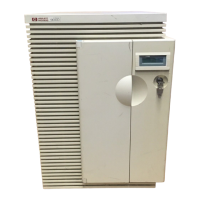
